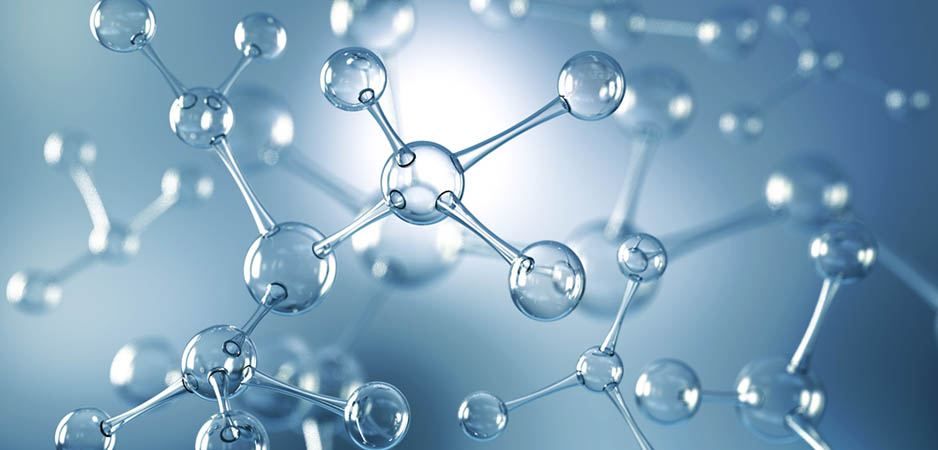In this edition of The Interview, Fair Observer talks to Joachim Frank, the 2017 Nobel Prize laureate in chemistry.
The Nobel Prize, the most prestigious in life sciences, is awarded annually to individuals who have made the most notable contributions to the fields of chemistry, physics, physiology or medicine, literature and peace. Since Alfred Nobel founded the eponymous prize with the money he made from his numerous inventions, which famously included dynamite, in 1859, one of the world’s most respected awards was born and has been annually celebrating outstanding achievements, innovations and discoveries in culture, academia and sciences and major contributions to global peace ever since. The prize in economics was introduced in 1968 by Sveriges Riksbank to commemorate the inventor on the bank’s 300-year anniversary. The monetary value of each Nobel Prize is about $1.1 million, which comes along with a diploma and a medal.
The Nobel Prize in Chemistry has been awarded to a total of 181 laureates between 1901 and 2018. The Polish physicist and chemist Marie Skłodowska Curie is one of the most prominent scientists who received a Nobel Prize in Chemistry in 1911 for her discovery of the elements radium and polonium and her work on artificial radioactivity. The German chemist Otto Hahn is another distinguished Nobel Prize laureate in chemistry who was recognized by the Nobel Committee in 1944 for his discovery of nuclear fission — a discovery that led to the development of nuclear weapons. Frédéric Joliot, who was 35 years old when he received the award in 1935, is the youngest laureate in chemistry so far. The oldest Nobel laureate in chemistry to date is John B. Fenn, to whom the award was presented in 2002, when he was 85 years old. Five women are among the Nobel Prize laureates in chemistry.
The late Swedish sculptor and engraver Erik Lindberg designed the Nobel medal for chemistry so that it “represents nature in the form of a goddess resembling Isis.” The first recipient of the Nobel Prize in chemistry was the Dutch physical chemist Jacobus Henricus van’t Hoff in 1901.
Joachim Frank is a German-born American biochemist who was awarded the 2017 Nobel Prize in Chemistry for his work on image-processing techniques that are pivotal to the development of cryo-electron microscopy (cryo-EM). The two other recipients of the award who shared it with Frank were Swiss biophysicist Jacques Dubochet and British molecular biologist Richard Henderson.
In this edition of The Interview, Fair Observer talks to Joachim Frank about his academic career, his work on single-particle cryo-electron microscopy and his life after being awarded the Nobel Prize.
The transcript has been edited for clarity. The interview was conducted at the end of 2018.
Kourosh Ziabari: How did the Nobel Prize in Chemistry change your life and career? Had you ever expected such a recognition or did it come as a surprise?
Joachim Frank: It changed my life profoundly. On the positive side, numerous invitations from all over the world have brought opportunities to meet and interact with interesting people that I would never have met otherwise. My wife, who accompanied me on several trips, and I enjoyed generous hospitality wherever we go. I received special honors by my German high school and my German universities. However, the erratic schedule has come at a price. I find it more difficult to get projects done because of constant interruptions. I still have to find a better way to plan my day-to-day activities and to coordinate my future trips.
To what extent it changed my career, I will only be able to tell in a few years. Right now I have only one year to look back to. I do, however, feel free to define new directions and take higher risks than before.
Have I ever expected such a recognition? Yes, I felt at a certain point, around 1985, that my work would be transformative, but I didn’t know whether and when the technique would reach the present perfection — i.e., close to atomic resolution. I also didn’t know whether my contributions would be recognized as standing out among all the other claims. Most importantly, the example of Ernst Ruska showed me that decades can go by without this kind of recognition. In fact, many scientists never got the recognition they deserved.
Ziabari: You and the two other scholars who were awarded the 2017 Nobel Prize in Chemistry began your research on electron microscopes in 1970s. Don’t you think the prize should have been awarded sooner?
Frank: No, it makes perfect sense. Only after 2012, when the direct electron detection cameras came out commercially, did the technique become a competitor of X-ray crystallography, and the vast potential could be seen and appreciated. This is radically different from the fate of Ernst Ruska, who invented the electron microscope in 1931 but got passed by for many years, even though electron microscopy revolutionized biology and materials science starting in the 1950s. He finally shared the Nobel Prize in Physics with the inventors of Atomic Force microscopy in 1986, almost as an afterthought.
Ziabari: Why is it important for chemists to be able to freeze molecules and record their activity visually? Does cryo-electron microscopy have any medical and pharmaceutical benefits, as well?
Frank: I would think it’s important for biochemists, not chemists in general, since the molecules general chemists are concerned with are too small to be visualized by cryo-EM. It’s important for biochemists and biologists since life processes are constituted by molecules interacting with one another in the cell. Cryo-EM is better than X-ray crystallography in recording activities of molecules authentically, unconstrained by forces of crystal packing.
Going by my own experience, my advice is to go through life with peripheral vision: Look out for opportunities from unexpected events. There is no straight path to success.
Cryo-Electron Microscopy has medical and pharmaceutical benefits, just as the other methods of structure determination. It simply expands the range of molecules for which atomic or near-atomic structures can be determined. Many ion channels and receptors fall in that category, but also many molecules that have multiple components and exist in numerous combinations of these components, such as the spliceosome.
Ziabari: What were some of the major limitations of the early modes of electron microscopes and imaging techniques, including the early prototypes that were used in 1931, X-ray crystallography that began to be utilized in early 1950s and the nuclear magnetic resonance in 1980s? In what ways was your discovery innovative and unprecedented?
Frank: Electron microscopes were initially not equipped to look at molecules — buildup of contamination during imaging was high since the vacuum in the column was not high enough, and devices to trap contamination close to the stage were not yet developed. Imaging biological specimens, which by nature are hydrated, under vacuum conditions posed a problem that could only be solved by big compromises — negative staining and air-drying of molecules deposited on a carbon grid, or thin sectioning of plastic-embedded cells and tissues, or looking at replicas of freeze-fractured cells. The introduction of cryo-methods in the late 70s and early 80s made a huge difference in this regard.
X-ray crystallography has at least three limitations. First, it requires the molecule to form highly ordered crystals. Second, in these crystals, because of packing forces, the molecule might not assume the conformation and shape relevant to its function. And third, large sample quantities are often needed to search for conditions suitable for crystallization.
NMR is largely confined to investigation of small molecules.
“Discovery” is not a correct term for the work I have done. “Invention” might be a better term to use.
It was innovative since at the time I began work on it, the concept of “structure” was synonymous with “crystal structure” — molecules needed to be arranged in regular order, helical, icosahedral as in viruses, or planar two-dimensional, to be afforded a “structure.” This thinking may have been due to the influence of people working in X-ray crystallography. As a consequence, all efforts by electron microscopy to determine molecular structure centered on samples with ordered arrangements of molecules. The only exception was my mentor, Walter Hoppe, but he pursued a route that I considered unrealistic: tilting a grid on which molecules were deposited into many angles, and then forming a 3D image of the whole field from the projections collected. This was unrealistic since it resulted in the accumulation of a large electron dose, which destroyed the molecule in the process.
My innovation, compared with my mentor’s idea, was in the realization that molecules in solution existed in thousands, millions of “copies” with identical structure, so all one had to do was put the solution on the grid and take a snapshot of these multiple “copies” at very low dose. The molecules did not need to be tilted — they already existed in many different orientations. And since they existed in so many copies, averaging could be used to get rid of the noise associated with the low dose.
 Ziabari: How does your innovation in cryo-electron microscopy make it possible to carry out detailed observation of the dangerous Zika virus, which was otherwise impossible?
Ziabari: How does your innovation in cryo-electron microscopy make it possible to carry out detailed observation of the dangerous Zika virus, which was otherwise impossible?
Frank: My part of the innovation has to do with reconstructing molecules that have no symmetry whatsoever. The Zika and other viruses have icosahedral symmetry, meaning that the virus shell is composed of 60 copies of a subunit is exact order. In this case, specialized mathematical, computational procedures can be used to obtain the reconstruction, but these were already developed by Tony Crowther at the LMB/MRC in Cambridge in 1970. So, for obtaining the structure of the Zika virus, Jacques Dubochet’s contribution in developing cryo-EM as a technique of sample preparation is the most important.
Ziabari: At the same time as being a scientist, you are also a fiction and short story writer. Have your scientific achievements boosted your literary career and brought your works of literature into limelight?
Frank: Just a little of that has happened: A one-page article appeared in The Wall Street Journal, which was based on an interview, and the whole article was about my fiction writing. This, in turn, brought me an invitation to give a lecture and read from my work at the prestigious Writers Institute founded by William Kennedy in Albany. William Kennedy attended the event, and this I considered a high honor. Editors of some fiction journals I had my work in made a point of mentioning my award in an editorial. Otherwise, the few pieces I submitted after last October were all rejected. I suppose editors will loathe the idea of making decisions based on achievements in other areas, and in fact I’m tempted to leave out the note about the Nobel Prize in my bio altogether, to avoid this kind of bias.
Ziabari: Please tell us about the Frank Lab. What are the major research activities you and your team carry out at there? I noted that you study translation at the lab. What is this process all about?
Frank: We study translation, meaning the translation of the genetic code residing on the messenger RNA into a sequence of amino acids linked to form a polypeptide, which in turn folds to become a protein. The molecular machine that makes this happen is the ribosome, a large, very complex molecular machine. In my lab, the ribosome was used extensively to develop the single-particle techniques, before its structure was known. The reason was that it is large, very stable and has high contrast. Then at the beginning of the 1990s, when we got the first cryo-EM reconstructions of the ribosome, I realized we could actually make contributions to biology, so I hired ribosome biochemists and invested in centrifuges and other fancy equipment needed in a wet lab.
Now, more recently, we are working on two further innovations to cryo-EM: one is time-resolved cryo-EM, which is a method to visualize short-lived states of a molecular machine in the range of 10 milliseconds to one second. The other one is to map the entire continuum of states of a molecule by analyzing very large cryo-EM datasets, and essentially get a picture of the molecule’s energy landscape, which gives us much more information than before about the molecule’s function.
Ziabari: What’s your advice for young, aspiring scientists who want to follow your path and make groundbreaking achievements in their fields of study and research?
Frank: Going by my own experience, my advice is to go through life with peripheral vision: Look out for opportunities from unexpected events. There is no straight path to success. My entire research career was full of accidental discoveries, but you need to have a mindset to see the opportunities at every step along the way. And mentors can be very helpful in setting you on your path, but mentors can also be wrong, so use your own critical mind in every decision you have to make.
The views expressed in this article are the author’s own and do not necessarily reflect Fair Observer’s editorial policy.
Support Fair Observer
We rely on your support for our independence, diversity and quality.
For more than 10 years, Fair Observer has been free, fair and independent. No billionaire owns us, no advertisers control us. We are a reader-supported nonprofit. Unlike many other publications, we keep our content free for readers regardless of where they live or whether they can afford to pay. We have no paywalls and no ads.
In the post-truth era of fake news, echo chambers and filter bubbles, we publish a plurality of perspectives from around the world. Anyone can publish with us, but everyone goes through a rigorous editorial process. So, you get fact-checked, well-reasoned content instead of noise.
We publish 2,500+ voices from 90+ countries. We also conduct education and training programs
on subjects ranging from digital media and journalism to writing and critical thinking. This
doesn’t come cheap. Servers, editors, trainers and web developers cost
money.
Please consider supporting us on a regular basis as a recurring donor or a
sustaining member.
Will you support FO’s journalism?
We rely on your support for our independence, diversity and quality.






